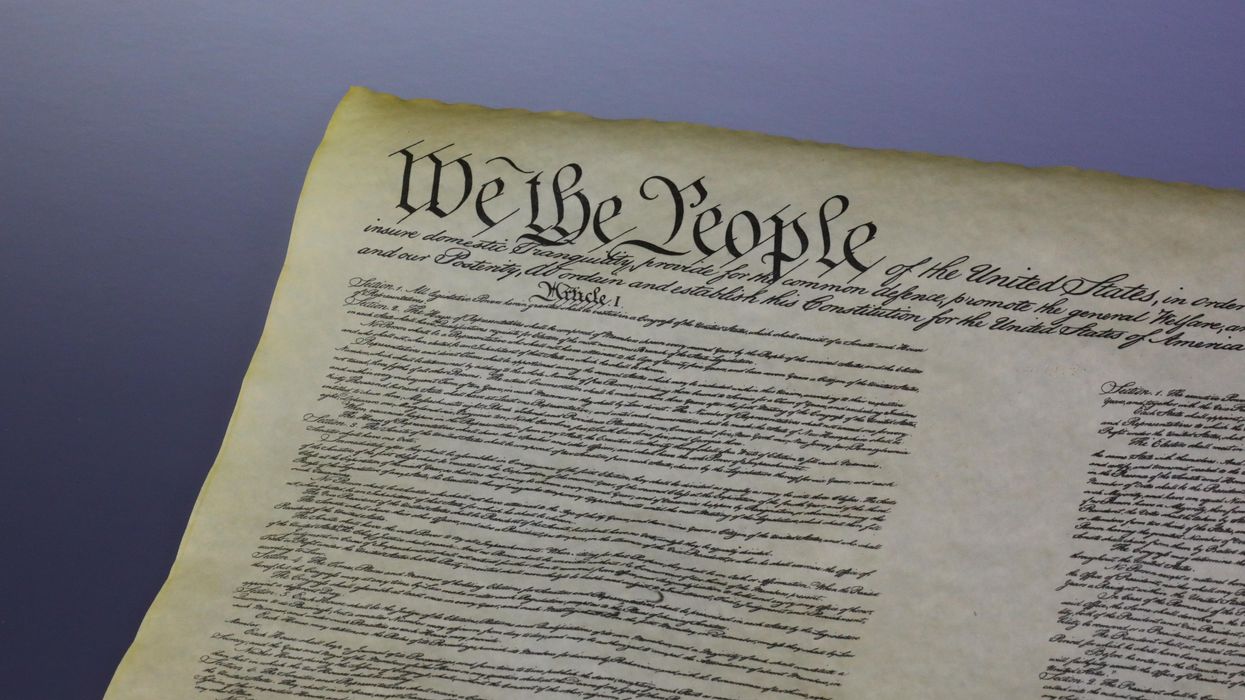LaRue writes at Structure Matters. He is former deputy director of the Eisenhower Institute and of the American Society of International Law.
The next wave of constitutional amendments is more than a few years out, but it will arrive sooner than we think (we are late in the gap between such waves, when no or only extraordinary amendments occur). We can anticipate this wave because today’s thought leaders are moving past the late-gap conventional wisdom that amendments can’t happen; they are now proposing amendments, a potentially significant milestone.
So which proposals might prevail? The factors that will determine the survivor amendments are numerous and ever-changing. However, for any amendment to reach the ratification goal line, it must address a genuinely constitutional issue while garnering wide public support and overcoming partisan divisions, a high bar under the best of circumstances.
The most obvious amendment candidates are those involving existing constitutional features, such as the Electoral College or the lack of congressional term limits. While proposals to abandon both are popular, they also generate strong partisan opposition, which reduces their prospects, at least in the short term.
Newer amendment proposals also aim to correct existing provisions. Recently, the National Constitution Center’s Constitution Drafting Project produced five recommendations that united teams of conservative, libertarian and progressive scholars. Among them are replacing the “natural born” requirement for presidents with both citizenship and residency for at least 14 years; creating staggered, single, 18-year terms for Supreme Court justices; and reducing but retaining the supermajorities required for Congress to pass and then states to ratify amendments.
Vetting of and building public support for these amendment proposals are mostly nascent, perhaps excepting the Supreme Court proposal. But it is starting. For example, the Sandra Day O'Connor College of Law at Arizona State University hosted a Model Constitutional Convention over the Memorial Day weekend. More than 100 student delegates from over 70 universities and law schools devoted half of their deliberations to the CDP recommendations. (Disclosure #1: I participated, and will report on the complete convention in my next writing.)
And then there are proposals, some long-standing as well as some comparatively new, for additions to the Constitution. Among them are an Equal Rights Amendment, an affirmative voting rights amendment and the For Our Freedom Amendment, which calls for reasonable limits on campaign spending. Today, FOFA would seem the most likely to reach ratification, as it also benefits from having popular support and a growing grassroots network.
Tomorrow, however, events could well change any idea’s prospects. A presidential election could fail to produce a winner of at least 270 electoral votes and end up being decided by the House of Representatives. Such a fiasco could provide the final nail in the Electoral College’s coffin.
Or a voting rights amendment could rise to the top of the list if voting restrictions go too far, or if voting rights advocates accept the idea of a national voter ID that is readily available and locally administered. Voting provides the substructure on which our democracy rests, so constitutional change might gravitate in this direction.
While partisanship represents a sizable hurdle for any amendment, it also provides its starting blocks. After Franklin Delano Roosevelt was elected a fourth time in 1944, for example, Republicans led the way to limit presidents to two terms. In control of Congress for the first time since 1931, they secured passage in 1947 of what became the 22nd Amendment upon ratification in 1951.
Still, proposals that are more immune to partisan attack would seem to have better prospects, while also being better suited for inclusion in the Constitution. For example, lengthening congressional term limits beyond the standard proposals could overcome Democratic opposition to this popular notion. More importantly, it would enable Congress to break through its institutional sclerosis while retaining member expertise.
One proposal that arguably produces no partisan advantage or disadvantage involves term lengths. Changing the length of legislative and executive terms — three years for Representatives, and a presidential first term of six years followed by a second term of three years — would better sync elections with voter behavior, save time and money, and significantly improve presidential service. (Disclosure #2: This is my idea.)
Regardless of which of these or other proposals might emerge, the fact that foundational matters affecting democracy are on the table is encouraging. Dealing with the symptoms and immediate challenges of electoral dysfunction is of course warranted, even critical in 2024, but their underlying causes require attention too. Constitutional change must find its way back into civic discourse.
The country now has numerous good ideas (and some not so good) for changing the Constitution. No single amendment can include them all, so multiple amendments will be needed. These could be ratified sequentially over a decade, as has happened in all prior waves, or they could be joined in a mutually beneficial set to combine and preserve the tremendous political energy required to produce constitutional change. (Disclosure #3: My proposal for a Bill of Structures features four such amendments, including the one changing term lengths.)
May we find the patience, stamina, optimism and civic wisdom necessary to reach and make the most of the next amendment wave. We’ve done it before. Let’s do it again.




















